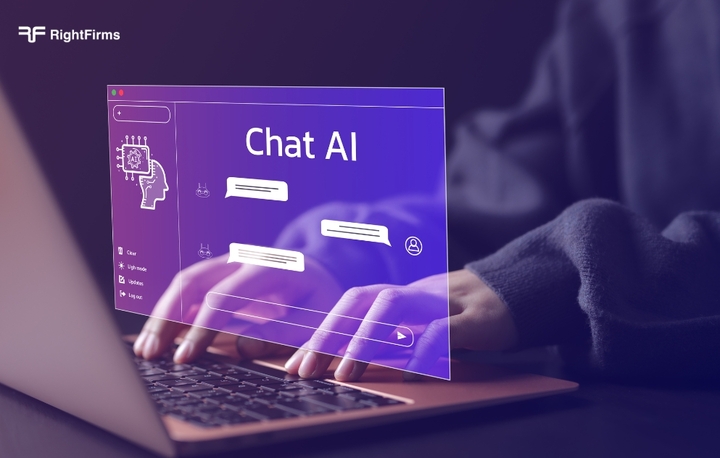More from RightFirms Profile
More in Politics
Related Blogs
Archives
Social Share
What are the key steps in developing an AI agent?
Body
Artificial Intelligence (AI) is transforming industries and driving innovation across the globe. One of the most exciting applications of AI is the development of AI agents—software programs that can perform tasks autonomously or semi-autonomously based on the goals they are designed to achieve. From virtual assistants to automated customer support systems, AI agents are becoming increasingly integral to modern digital solutions.
In this blog, we will walk you through the key steps involved in AI agent development, explore the different methodologies and techniques used by developers, and highlight how AI agents are created and refined.
This guide will simplify the process for a broad audience, making it easy to understand the mechanics behind the creation of these smart systems.
What is an AI Agent?
Before diving into the development process, it’s essential to define what an AI agent is. In simple terms, an AI agent is a program that uses artificial intelligence to make decisions, solve problems, or perform tasks without requiring constant human intervention. These agents operate within an environment, perceive the state of that environment, and take actions to achieve specific goals.
Some common examples of AI agents include:
- Chatbots for customer service
- Virtual personal assistants like Siri and Alexa
- Autonomous vehicles
- AI-powered recommendation systems like those used by Netflix or Amazon
While the complexity of AI agents can vary widely, the fundamental principles behind their development remain consistent.
Key Steps in Developing an AI Agent
- Define the Agent’s Goals and Objectives
The first step in AI agent development is defining what the agent is supposed to do. This step involves setting clear objectives for the agent’s behavior and understanding what tasks it will need to complete autonomously. For example, if you're developing a customer service chatbot, the agent's goal might be to answer frequently asked questions, resolve simple issues, and escalate more complex cases to human representatives.
At this stage, it is also essential to decide whether the agent will operate in a completely autonomous manner or require some level of human oversight.
2.Select the Appropriate Environment
An AI agent interacts with its environment to achieve its goals. The environment could be a virtual space, such as a website where the agent functions as a chatbot, or a physical space, as with AI-powered robots or autonomous vehicles.
Selecting the right environment is crucial because it will define how the AI agent perceives inputs and generates outputs. The environment can be either static (doesn’t change much over time) or dynamic (constantly changing, requiring the agent to adapt).
For instance, a stock-trading AI agent operates in a highly dynamic environment, where market conditions shift rapidly, while a virtual assistant in a smart home operates in a relatively stable environment.
3.Data Collection and Preprocessing
Once the environment and objectives are established, the next step is data collection. In AI agent development, data is vital because it trains the AI to make decisions based on past examples. The agent uses this data to learn how to perform specific tasks, make predictions, or respond to user inputs.
For example, if you are developing an AI assistant for answering customer queries, you would need a large dataset of customer questions and corresponding answers. However, raw data is rarely ready for use. It must go through preprocessing steps like:
- Cleaning: Removing irrelevant or erroneous data.
- Normalization: Standardizing the data format.
- Feature Extraction: Identifying the most important attributes that the AI agent will focus on during training.
4.Choosing the Right Algorithm
Different AI tasks require different algorithms. For AI agent development, the choice of algorithm depends on the complexity of the task and the type of environment in which the agent will operate. The following are some commonly used AI techniques:
- Machine Learning (ML): ML models are often used when the agent needs to improve performance over time. Supervised learning is used when the agent is trained on labeled datasets (e.g., customer emails and responses), while unsupervised learning is employed when the agent has to find patterns without explicit labels (e.g., clustering similar products in a recommendation system).
- Reinforcement Learning (RL): In reinforcement learning, an agent learns by interacting with its environment and receiving rewards or penalties for its actions. RL is ideal for tasks where the agent needs to learn optimal behavior over time through trial and error, such as playing a game or managing resources.
- Natural Language Processing (NLP): If the AI agent interacts with humans through language, like a chatbot or virtual assistant, NLP techniques are used to understand, process, and generate human language.
5.Training the AI Agent
Training is a critical phase in AI agent development. During this phase, the AI model learns from the training data to make accurate predictions or decisions. This step involves feeding the AI agent historical data, allowing it to detect patterns, make connections, and learn how to respond to future scenarios.
In cases like reinforcement learning, the agent continually interacts with the environment, learning from its actions and their outcomes. The training process is iterative, and the model improves its performance over time.
Key Considerations During Training:
- Overfitting: Overfitting occurs when the model performs well on training data but fails on new, unseen data. To avoid this, developers use techniques like cross-validation and regularization.
- Computational Resources: Training large models requires significant computational power, often involving GPUs and distributed computing to handle large datasets efficiently.
6.Testing and Validation
After training, the AI agent must be thoroughly tested to ensure it meets the defined objectives. Testing helps verify that the agent performs well in both the environment it was trained for and in new scenarios it has never encountered.
There are several testing phases:
- Validation Set: A portion of the dataset is reserved for validation, allowing developers to test the agent's performance during training.
- Real-world Testing: Testing in real-world conditions is essential to ensure the AI agent behaves as expected in dynamic environments. For example, a self-driving car AI agent would be tested on real roads.
- Stress Testing: In some cases, the agent may be tested under extreme conditions to see how it handles unusual situations.
7.Deployment
Once the agent passes testing, it is ready for deployment. At this stage, the AI agent is integrated into the environment where it will function in real-time. For instance, a chatbot would be embedded in a customer service system, or an AI-powered assistant might be integrated into a smartphone app.
During deployment, it's essential to monitor the agent’s performance closely to ensure it’s meeting expectations. Sometimes, developers release the agent in stages (e.g., beta testing) to gather user feedback and address any issues before a full-scale launch.
8.Continuous Monitoring and Improvement
AI agents are rarely static after deployment. They often require continuous monitoring and updates. New data streams might necessitate retraining the model, or the environment might change, requiring tweaks to the AI's functionality.
- Feedback Loops: Gathering user feedback helps refine the agent's performance.
- Updates: Periodically updating the agent with new features or improved algorithms ensures it remains efficient and up to date.
This iterative process helps the AI agent evolve alongside its environment, ensuring long-term functionality and effectiveness.
Challenges in AI Agent Development
While the steps outlined above provide a roadmap to developing an AI agent, there are several challenges developers might encounter:
- Data Quality: Without high-quality data, the agent’s performance will suffer.
- Model Complexity: Some AI tasks require extremely complex models, which can be difficult to train and implement.
- Ethical Considerations: Developers must ensure their agents behave ethically, especially in sensitive domains like healthcare or law enforcement.
Future Trends in AI Agent Development
AI agents are advancing rapidly, and several emerging trends are shaping the future of AI agent development:
- More Human-Like Interaction: Advances in NLP and deep learning are making AI agents better at understanding human language and responding naturally.
- Increased Autonomy: AI agents are becoming more independent and capable of functioning with minimal human oversight. This is especially relevant for applications like autonomous vehicles and robotic systems.
- Integration with IoT: The Internet of Things (IoT) is expanding, and AI agents will increasingly control and manage connected devices, leading to more intelligent and autonomous systems.
Conclusion,
Developing an AI agent is a multi-step process that involves defining goals, choosing the right environment, collecting and processing data, selecting appropriate algorithms, and training, testing, and deploying the agent. Each step is critical to ensuring the success of the final AI agent.
As AI continues to advance, we can expect even more sophisticated agents capable of handling a wide range of tasks with minimal human intervention. From autonomous systems to personalized assistants, AI agents will continue to shape the future of technology.
For those seeking more insights into AI development and innovation, RightFirms provides a variety of resources to help professionals stay at the cutting edge. ????










Comments